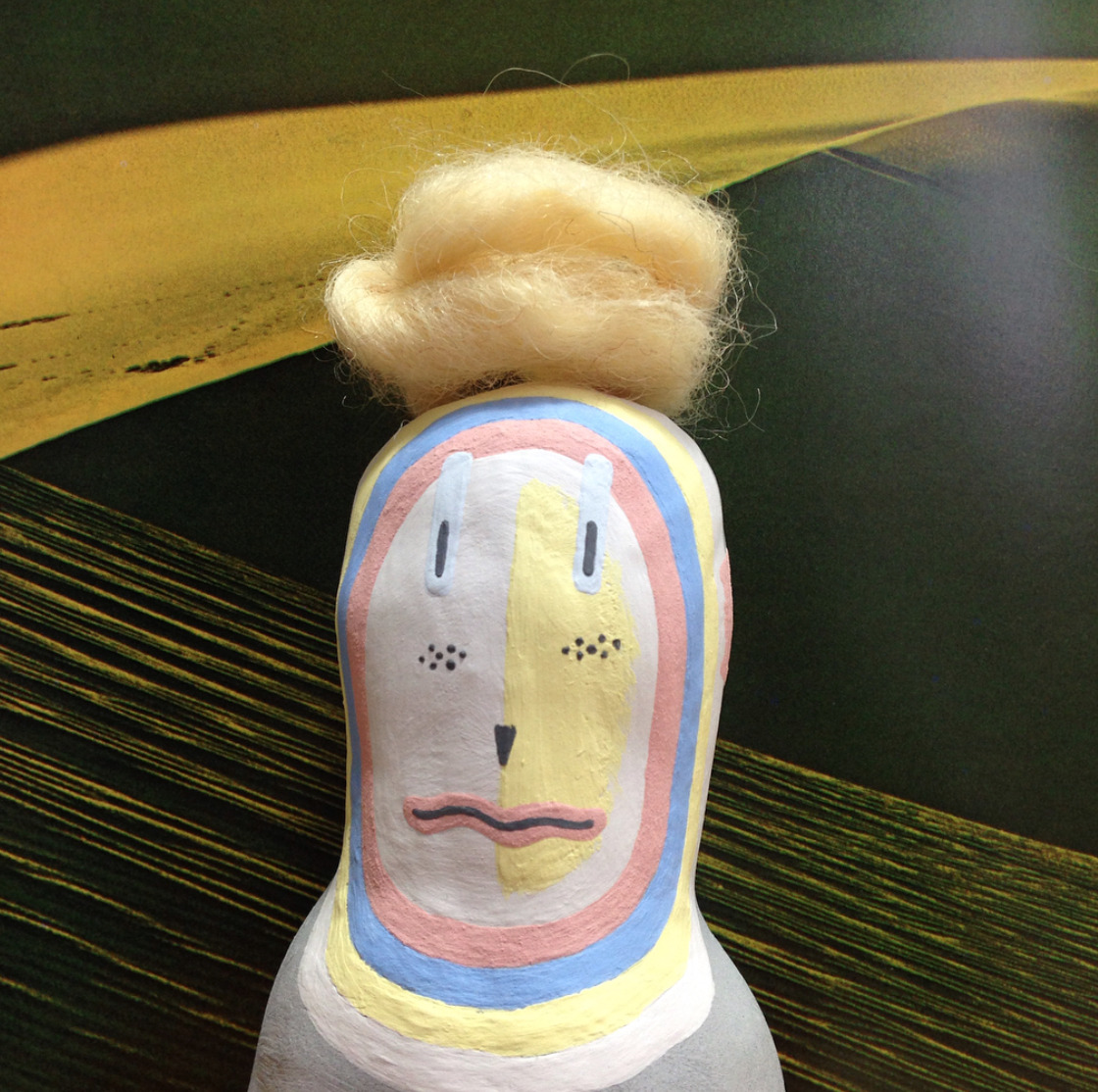
Reading Daria Tessler’s mesmerizing book Cult of the Ibis last summer was a revelation. I knew Tessler’s work from the 2019 stunner Loop of the Sun from Perfectly Acceptable Press, and maybe it was just Tessler’s truly unique vision, but Cult did a number on me. You don’t run into comics that ambitious and well-executed every day.
It turned out to be a good time to get in: Tessler is in the midst of a giant run, at the height of her printmaking powers, releasing a series of carefully-crafted publications from the fall of 2022 through this spring, beginning with a Floating World Comics rerelease of Cult of the Ibis and culminating with her newest book, Salome’s Last Dance, out from Fantagraphics in May.
We spoke via email early this year, touching on her work and process, the trials and tribulations of artmaking in the modern era, and socked-away Chagalls.
-Jacob Grubman
JACOB GRUBMAN: How are you doing this new year? I suppose Short Run was several weeks ago now, but how was your time tabling there?
DARIA TESSLER: Short Run is my favorite comic show, and was doubly wonderful after having not seen many of those cartoonists for three years. Short Run has great energy and draws a really open-minded, curious crowd. Kelly Froh does such a solid job organizing, and I’m sure she had lots of help from other folks, but I’m so thankful she’s keeping it going.
That’s a show I’ve always hoped to check out. Do you think there are discrete shifts you’ve observed in the scene over these years? It’s wild to me that March 2020 was almost three years ago now.
I don’t see discrete shifts, not like suddenly things change wildly, but I think the Risograph wave the indie comics scene is in has shifted the emphasis away from focused, longform narrative content to illustration and design, with some more nebulous mood pieces that resemble loose-form poetry - and while I think it’s beautiful, I find it a bit harder to find the kinds of narrative-driven comics I’m most fond of.
Have you seen any kind of shift in your own work or taste? Who were your early influences?
I didn’t grow up reading comics in any serious way. I liked the Sunday funnies, I really loved The Far Side, but I never read actual comic books. It sounds dumb, but it took several years as an adult struggling with my poor comics reading skills to get comfortable reading them. I felt like my brain had two separate zones—one for processing text, and a different one for processing images—and the two zones fought with each other when I tried to read comics. It took a lot of practice to make my eyes stop swinging all over the page; they weren’t absorbing the panels in order. I had to sync up my ability to process text and image simultaneously. I read some comics in my 20s but I didn’t really start reading a lot of comics ‘til I was about 30.
I think my lack of comics literacy, and not knowing how to put together a story, is why when I was around 21 or 22 my first minicomic was much more like poetry comics. And all the minis I made in my 20s were whimsical, dreamy, fluffy things that I’m pretty embarrassed by now. I didn’t really think I was making comics at the time - I thought I was making little art zines, but folks in the comics scene told me they were comics, which probably got me looking more at comics, which for an adult outsider can be really intimidating! You go into a comic shop, there are thousands of things you can pull off a shelf and you might only click with .5% of what’s in there. You might have to flip through 200 books to get to the one that really connects. Luckily I had some cool friends share comics that they thought I’d like, and that really helped me find comics I could care about.
I was, and still am, really into mythology and fairy tales from around the world, and I think I used some of those archetypes and the hero’s quest structure for my early projects because it seemed simple and manageable. But it felt limited and unsatisfying. I spent most of my 20s struggling with a few longer story ideas that just went nowhere and were complete messes. I had to abandon them despite working really hard on them.
I was watching a lot of ‘40s and ‘50s noir, and the storytelling patterns there really helped me pop out of whatever rut I was in, and gave me a more complex structure to hang some of my ideas on. I’m not great at writing, but at least I feel like I can come up with endings that I feel ok about now.
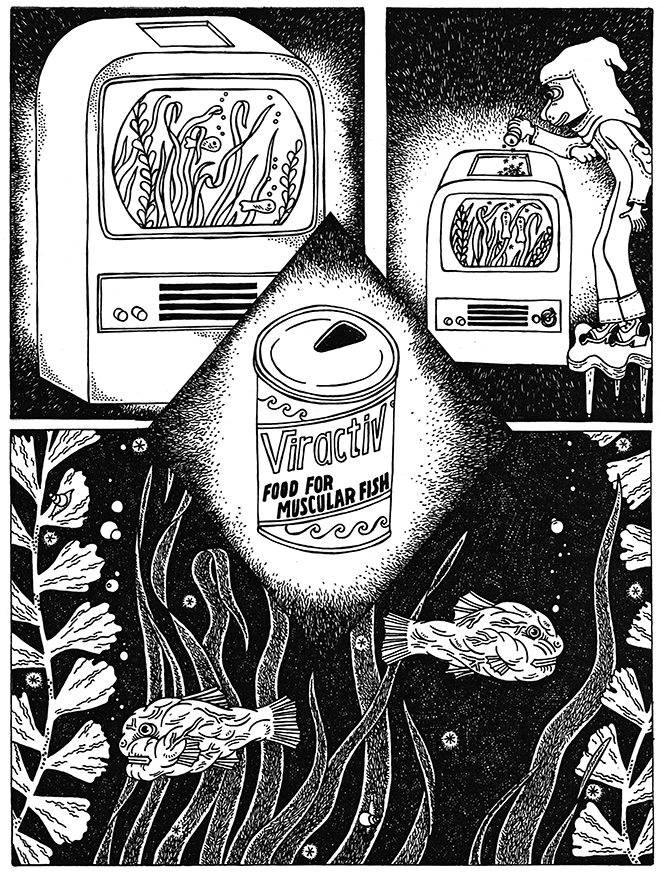
You had Cult of the Ibis and Loop of the Sun come out in 2019 - was this around that time window? I view both of those as some of the most special work of the last several years, but they are also very different from one another. Cult of the Ibis is a long narrative, drawn in black and white, and Loop of the Sun is wildly colorful with collage components. I’m curious where you see them in the context of your growth as an artist and storyteller.
I didn’t make those books at the same time, even though they came out the same year. It took me five years to make Cult of the Ibis, and there was at least a year’s lag time between my completing it and when it came out in print. I probably started Loop of the Sun right after I finished Cult of the Ibis.
I think Cult of the Ibis was my first longer narrative that I managed to make function as a story, and I did use the noir model for that plot, which helped me a lot with structure and direction. I also really like the dark, gritty noir atmosphere and tried to channel that in the art.
I see Cult of the Ibis as fiction, but Loop of the Sun is adapted mythology. It’s one of several versions of the ancient Egyptian creation myth - [a] text that is thousands of years old. So I interpreted existing, translated text into images, but I didn’t write or even embellish the existing myth. It’s somewhat easier to interpret or adapt existing text than to write a story from scratch. I think these historical artifacts with text are fascinating - how people explained the world they lived in to themselves hundreds or thousands of years ago, that opens a door of connection for me, like a time machine or something.
In a way, I feel like that kind of project is more of an illustration project, where I’m illustrating the text and designing page layouts and fonts, but it’s not the same as writing my own stories and gags and things. I’m still very much in the learning zone with writing my own content.
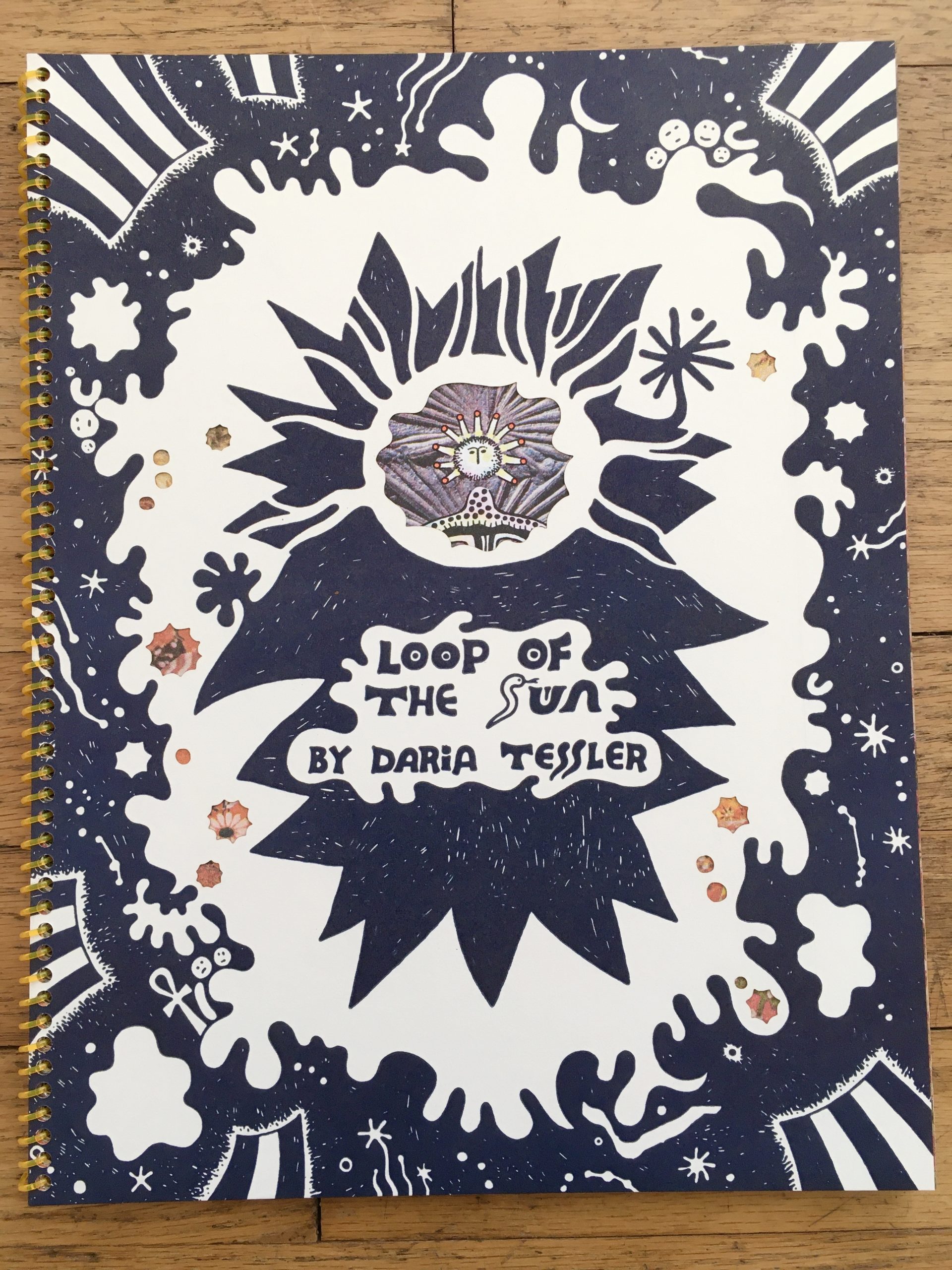
You also have several works coming together now, from late last fall to early this year. Floating World has Cult of the Ibis back in print, you have Salome’s Last Dance forthcoming from Fantagraphics in the spring, you have a new reprint of The Book of Secrets with Perfectly Acceptable Press, and you had at least a couple of comics out in time for Short Run, where you tabled back in November - not to mention your screen prints and other work. Has this been an especially fruitful period? And if so, what do you think has facilitated that? And how are you feeling about the direction of your work?
It’s been a productive year in terms of bringing bigger projects to completion and working with publishers to put comics in print and/or keep them in print. But it’s been a year that felt dominated by the daily grind of running a freelance business, and production work - scanning and prepping files, and figuring out the logistics of reprinting out-of-print books and working out some of the design elements of the new book with Fantagraphics. For that reason, the bulk of my time this year felt uncreative. I pretty much finished Salome’s Last Dance in early March this year - it took months to scan and prep all those files for print. I had spent something like a year and a half actually drawing the comic, so it feels to me like 2021’s project!
I think last year’s book project was Dames, the zine about women in film. That focuses on my thoughts about other people’s art, and trying to find the good in an art form that historically hasn’t been great to women. It didn’t feel like much of an imaginative project despite the hand-made production. I struggled with various mediums to create portraits for Dames, hoping to find something that felt more creative and less “realistic”, but ultimately all those weird ideas flopped so I tried scratchboard, which worked out well, but ended up feeling uptight and too representational for my taste.
The daily grind of a freelance business - do you find that it gets any easier over time? Are there certain tools that you’ve found helpful? I’m picturing stuff like your favorite scanner or software, or good accounting software or something. Anything that’s made that part of your life any easier? And do you think there are any changes that the industry or publishers could make to streamline those processes you mentioned?
Common sense would have you think it gets easier over time, but the reality for me has been that it’s gotten progressively harder. I think the “death of print” and rising cost of living, combined with the way the internet killed illustration-for-hire work, all comes together to make it a tough time to be a full-time artist or illustrator.
Magazine illustration used to be commercial artists’ bread and butter, and monthly magazines just don’t exist anymore. Probably around seven years ago I was asked to do an illustration for the New York Times and the pay offered was something like $175. I told my friend that and she said that was how much they paid when she did work for them in the early ‘90s. Everyone is panicking about AI stealing artists’ jobs, but from where I’m sitting, I’m wondering: what jobs? Every time I get asked to do illustration work-for-hire, the pay rate is so low I’d be getting less than minimum wage for my time. I can’t call that a job; a very generous description of that would be an internship.

I’m a luddite, which is probably a part of my problem. I don’t respond emotionally to a lot of digital art, and I have no desire to make any. I like the handmade feel of silk screens and drawings made with real-world materials on paper. I don’t enjoy working on computers - I use Photoshop as a production tool, but I’m not savvy enough to keep up with the latest gadgets and software.
But, ultimately, no tool can fix the untenable position capitalism has put artists in by completely devaluing their work. No new technology will help me cut enough corners to balance out all of those factors above.
There is a lot of pressure to crank out cheap art and make that functional through selling quantity. It’s like the IKEA model or something, and as a printmaker, I’m in a position to go that route. But I’ve felt less and less interested in working that way, because really cheap art gets treated like anything really cheap: it becomes disposable, and I don’t want to make tons of landfill fodder. I feel anxious about my impact on the world, on the environment, on how many resources I’m using, how many trees my art is responsible for killing, what silk screen ink does in the sewer system, what happens to emulsion when I rinse it down the drain. I worry about that stuff a lot. I really want to shift into something more sustainable for myself and for the environment by making fewer but more expensive pieces of art, but it just doesn’t work - my customers want $30 prints. Putting that in perspective, that’s art that may be on someone’s wall for 30 years, and it costs the same as one single meal at a middling restaurant. It’s tough to change how you fit into the art world once you’ve set people’s expectations and when there is an abundance of other super-cheap art out there to choose from.
I was interviewed by an art school student a few years ago, and he kept describing his art as “product”, and I’m guessing that’s something they’re teaching in art school now: how to actually succeed as an artist in capitalism. And how you succeed is by being not an “artist” but a “designer” who makes “product”. I see the practicality of this mindset, but it makes me sad. It’s so tied in with these social norms of devaluing art and artists while celebrating anything that fits better into the system of big business.
As far as hoping publishers will streamline anything, I don’t know. Often, they will do that work for artists who need help with that. I guess I still see that prep work within the realm of my responsibility in crafting a book the way I want it to come out. I know how I want to clean up my art; no one else will know what my intentions were.
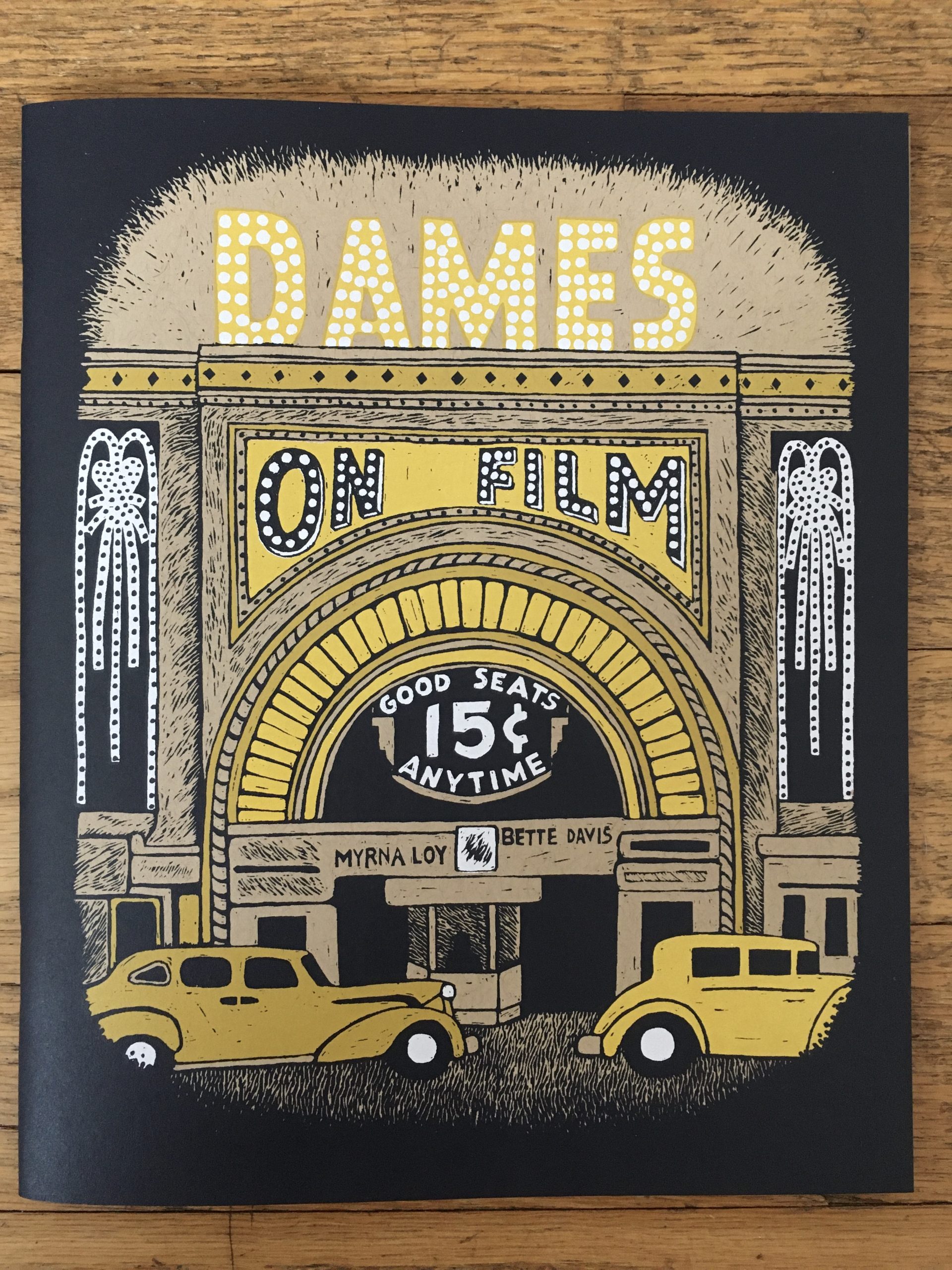
Well, I want to get back to stuff you’re excited about this year - I liked Dames a lot; your illustrations are terrific and I like that combination of visuals and commentary. But one more second on this: can you envision developments or changes that would address the issues you’re describing? They seem to be broad social questions that aren’t fixable within one industry or medium, but maybe there’s also a promised land for the world of comics, printmaking and illustration, specifically. I’ve read comments on questions of scale in production - comics as ephemera versus fine art as forever. I’m not sure I have another question here, other than: do you see reason for hope with respect to this problem?
We know peak capitalism doesn’t work for the majority of people who aren’t wealthy; obviously it isn’t just artists. I wish I had some cool, futuristic ideas, but I’m better at looking backwards and asking what worked for folks in the past. I think the labor movement of the early 20th century was really powerful. In an increasingly global world, it may be possible to create an international artists' union, and maybe we could all just stop making content for corporations unless we get fairly compensated. It’s a pie in the sky fantasy, but not totally impossible. Other than that, knowing this manic era of endless consumption and exploitation is unsustainable, we’ll have to ride this wave 'til some new world order manifests.
As to where comics fit into this picture, I don’t really have strong feelings there. I don’t distinguish between high art and low art, and I don’t consider comics any more ephemeral than Picasso. I suppose lots of comics have been thrown away, but then again, fine art gets stolen, lost, damaged and thrown away, too. I once saw a stolen Marc Chagall - my former boyfriend’s apartment super kept it in his closet and hoped we, as artists, could help him sell it. The world is full of fine art like that: hidden away, either illegally obtained or just unidentified or uncared for. What happens when his kids inherit that? They might have no idea what it is, or that it’s hugely valuable. It could end up in a dumpster, easily.
Your work seems to run the gamut: you’re a prolific maker of paintings and collages, screen prints, and comics and zines. How do you think about the differences in media in your own work? How do you decide what you want to work on at any given time?
I guess it depends on what’s going on with my schedule. If a comic show is coming up, I’ll focus on making something new for that. If I have an art fair coming up, I’ll focus on silk screens. I work on comics and silk screens the most. Every once in a while, I’ll feel like experimenting or trying something outside of my usual groove - that’s when I’ll pull out the paints, or if I have a gallery show deadline. I’m really not confident in my art outside of silk screening, so it’s something I’d like to get better at - I kind of take random stabs at painting once every few years.
I was really into collaging as a kid; my grandma made collages, and a few were hanging in my childhood home. My mom had piles of old magazines, so it was an accessible thing I could do that didn’t require special materials. Now I collage as a way to relax. I do it with less intent than I need for drawing and fiddle around to see what different bits of paper say when they’re next to each other. It’s like putting together a puzzle or something. Collaging also justifies accumulating huge piles of paper ephemera. I love old books and magazines. I have a hoard of old crumbly collage materials that fill a closet almost floor to ceiling.
I love everything about that - the collaging grandma, the magazines, the books and magazines and closet. Making collages as a kid - is that where things started for you? Were you always set on being an artist? And did you wind up going to school for it? (Asked, gracefully, 200 questions into the interview.)
I was always into arts and crafts. My dad was a freelance artist, a painter, but he was also the model of what not to do. “Don’t be an artist” was the mantra in my family - don’t be a broke failure like your dad. Even my dad agreed. So, I thought I was going to be some sort of scientist. I went to college pursuing a degree in math and physics for three years, then realized the higher I got in that realm, the more I was dropping towards the bottom of the class. I could do it, but I was no Stephen Hawking. It was a little fish in a big pond moment. I realized I could become a really unremarkable scientist surrounded by people who were actual geniuses, or I could switch gears and become a public school teacher. Then I transferred to UC Santa Cruz, and decided I needed to graduate ASAP to start my new career, and the fastest route to a diploma was an art degree.
Obviously, I was in denial. The art program there, at that time, was extremely lackluster and stuck in the mid 20th century. The faculty pushed a hybrid of glorified abstract expressionism and hippie woo-woo nonsense like “feeling the colors”. However, the print shop was incredible, and I just kind of moved in and made a ton of stone litho prints.
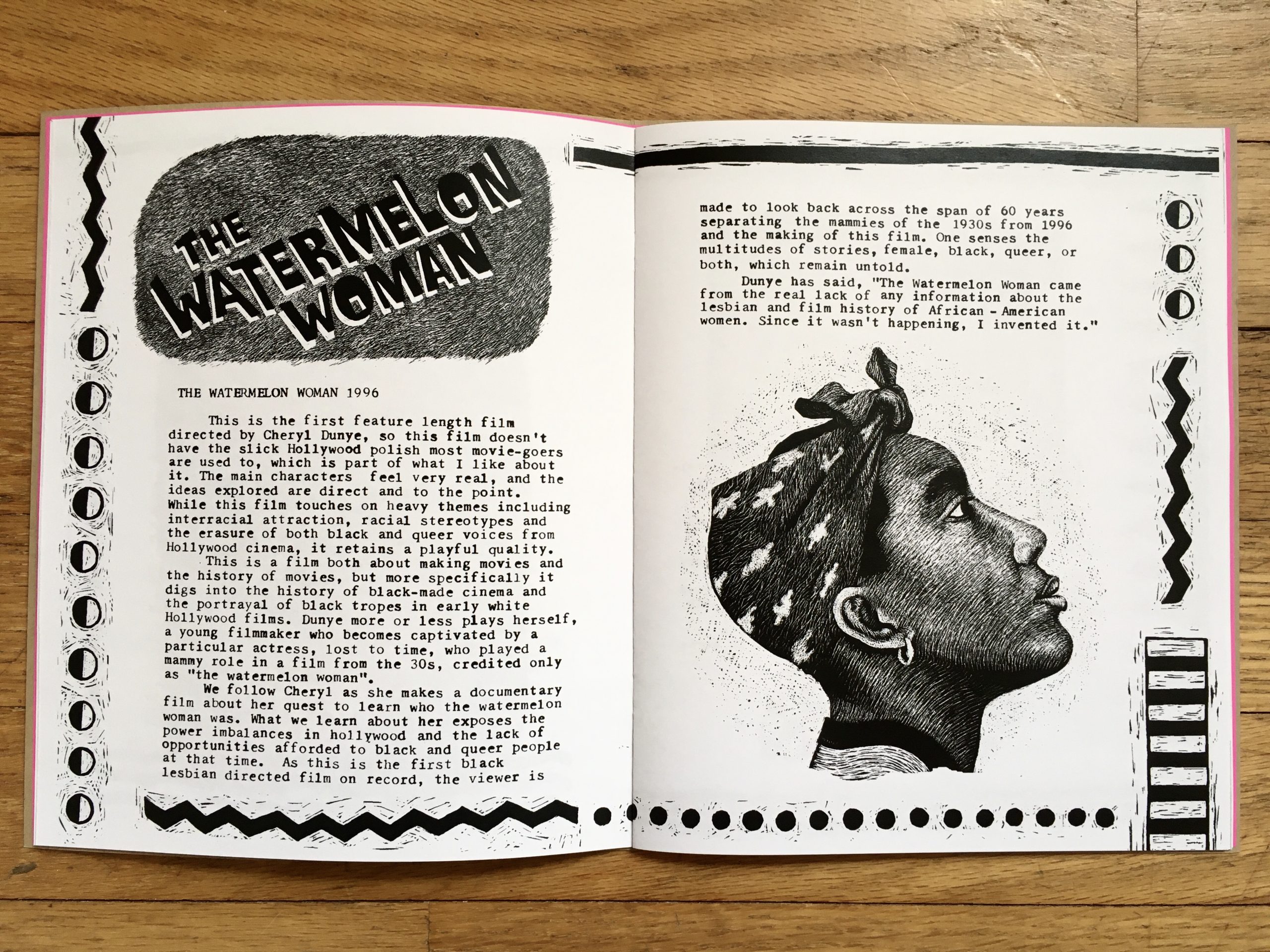
Do I have it right that you are your own printer when it comes to silk screens and self-published comics and zines? Are you especially enjoying anything you’ve been working on lately?
Yeah, I do all of my silk screening by hand, myself. I’ve been screen printing for 22 years now.
Last month I started a new comic, and I was a bit rusty, but I think I’m getting back into the swing of making comics again. It took me drawing a few pages I hated in order to get into the world I had in mind and to allow myself to expand what I hoped would be a two-page intro into a ten-page intro. Ten pages that are interesting are better than two pages that are boring.
I’m trying to make peace with the time-consuming nature of comics storytelling. It’s silly to say that, after already having spent ten years making comics, but I’m always fighting time, trying to find a way to condense my content or simplify my style. No matter what, it just takes me a lot of time and patience. Sometimes, extra gag possibilities reveal themselves to me only after I’ve drawn a scene - I have to allow myself to cut pages apart and add new content that will make it better. Or I realize I’m not explaining my transitions well, or elaborating enough on ideas that are important to me. There’s been a lot of cutting and pasting this week, which I thought I had matured beyond. I was thinking, “Now I’m a better cartoonist - I solve my problems with my thumbnails and pencils.” Not true! Back to square one. Which is probably a good thing, really.

You have a new book out with Fantagraphics in May, Salome’s Last Dance, and you also printed some copies of the book for Short Run this past fall. You mentioned earlier that it kind of feels like 2021’s book because of when you finished the artwork, but how are you feeling about it as a comic?
It’s a funny project, it’s my most screwball comic. I was inspired by an Edwardian theatrical poster of a real-life dancing dog act. The dog had sticks tied to its limbs and really long silk fabric strips tied to the sticks. As it moved around on stage, the fabric swirled around the dog. It reminded me of the Dance of the Seven Veils, which is Oscar Wilde’s striptease, and the idea of a dog doing a striptease just seemed too funny and gross to ignore. I thought it would be a short comic, but as all my comics do, it grew and grew and eventually took me a year and a half to finish.
I’ve always been into the idea of magic shows, illusions and stagecraft, so I kind of went with that as a framing device. It gave me some good settings and atmosphere. The last five years I’ve been trying to make comics with more characters and more dialogue and personality; hopefully the results aren’t too grating. I have no perspective, but if I can make myself laugh with a silly idea, I just go with it. I guess my comics are about keeping myself entertained.
I tried a new method with that comic, incorporating black & white collage into it, and hopefully that will come out well in print. It added depth and texture that I can’t really get with just ink. Plus, I could cram in some ads from 100-year old novelty catalogues, things that feel like such anachronisms from the past.
I really enjoyed seeing the collage component; this comic has a lot of your unique style. How does that work in practice, mixing collage and cartooning? Do you edit digitally? And will the interior of the Fanta version differ at all from the self-published version?
I make comics the old-fashioned way, with pens on paper, so here I just collaged right onto my originals using old magazines and glue sticks. I edit with scissors and more glue sticks! I cut out things I don’t like or paste a redrawn panel on top. My originals can have four layers of mistakes, they get really thick and lumpy in places. I only use the computer for clean-up, like erasing ink smudges, or fixing spelling mistakes.
I think aside from a few fixed typos, the comic will basically have the same content as the self-published version. The Fantagraphics version will be a nice hardcover with new liner paper designs, and hopefully the designers at Fanta will have solved the weird moiré problem I got on some of the collage elements when I self-published, so the image quality should be better.
How do you think about working with settings, characters and themes in older genres, whether Edwardian era dancing dogs or mythology? Is it a matter of feeling most entertained by those genres? Do the existing bodies of work help guide your creativity?
I get really into genre and historical factoids and ephemera. It helps build rich atmosphere, and I think that might be my strong suit. I struggle with character development, I tend to work with the same types of stock characters, but I can dial in a pretty specific setting and mood with all that researched historical detail. My goal is to make an immersive story, and [the] setting can really draw the reader in.
But yes, I think the genre and historical tidbits are the parts that entertain me. Funny or weird trivia that I want to share with people. I’m a heavy researcher. For every longer comic I make, I have a stack of research books, and I look at a lot of imagery on the internet. Books are much more reliable for information, but the internet has a lot of photos of old places and old objects I can adapt or build off of.
It ended up not being necessary, but I researched a lot of con man schemes and read a few nonfiction books on classic short and long cons because Salome’s Last Dance features a con man. I guess it helped with a little bit of dialogue. I was shocked and delighted to learn that there really was a catalogue you could mail order every type of loaded dice imaginable from. So, when you see one of the characters reading that catalogue, that’s all based on real products you could illegally mail order in the 1940s.

How great! Who couldn’t use some loaded dice? Looking ahead, do you think that research might factor into future work? And what else do you have in store for 2023?
I’m still hoping to get back to my comic Cagelessness. I had self-published volume one a few years ago. That one has a lot of research. It’s kind of a sprawling project, so the research is all over the place on that one.
I also just started a comic about a character who is a contestant on Wheel of Fortune and wins a vacation trip to an exotic garden. The garden turns out to be sort of a malevolent place. I’m hoping that one stays a bit shorter.
As a last question, what have you been enjoying lately, comics or otherwise?
These last few months I’ve been watching more Czech New Wave movies, which are endlessly wonderful. I’ve dipped into some Latin American New Wave as well, and I’ve been watching a lot of animated shorts from Eastern Europe.
I just finished Shigeru Mizuki’s NonNonBa, which was the best comic I’ve read all year. I also just got back from Angoulême, which was really inspiring. The variety of comics there was huge. I bought a stack of comics I’m excited to read, but I’m going to have to improve my French to read them! I got a book of Nicole Claveloux’s comics that weren’t included in The Green Hand. Other books I got that seem promising include one by Stéphane Blanquet, an extremely wild-looking thing by Pierre La Police & Jean Lecointre called La balançoire de plasma, a psychedelic rainbow hippy dance party comic by Paul Descamps, and a reprint of French comics from 1906-1915 by G.Ri in an oversized book called Dans l'infini, which looks like very early sci-fi/fantasy comics.







